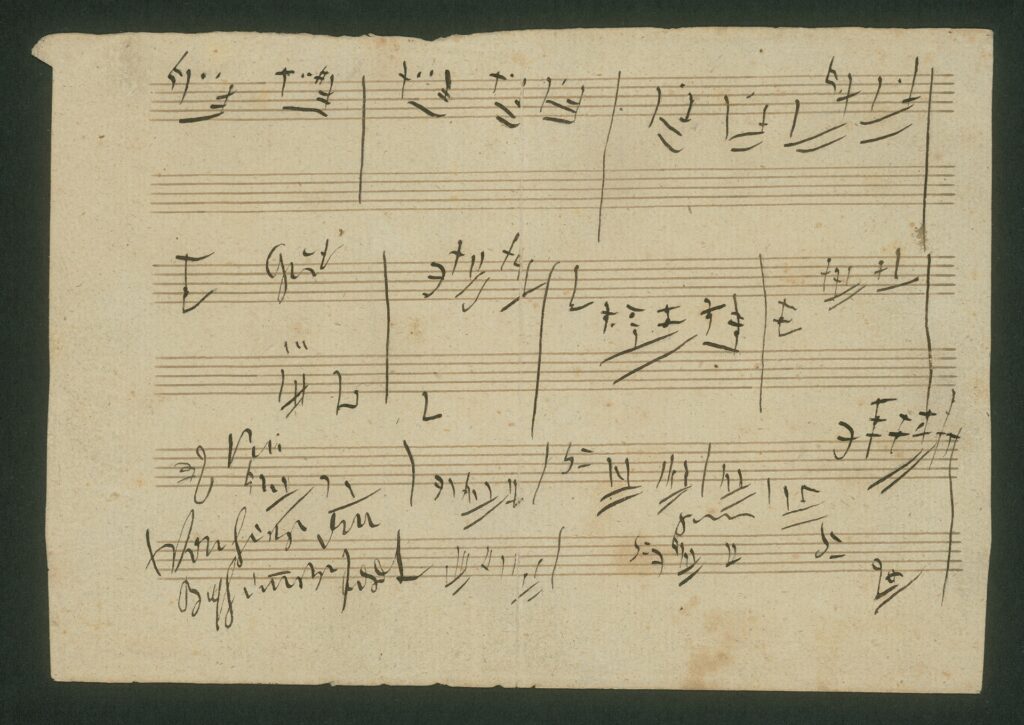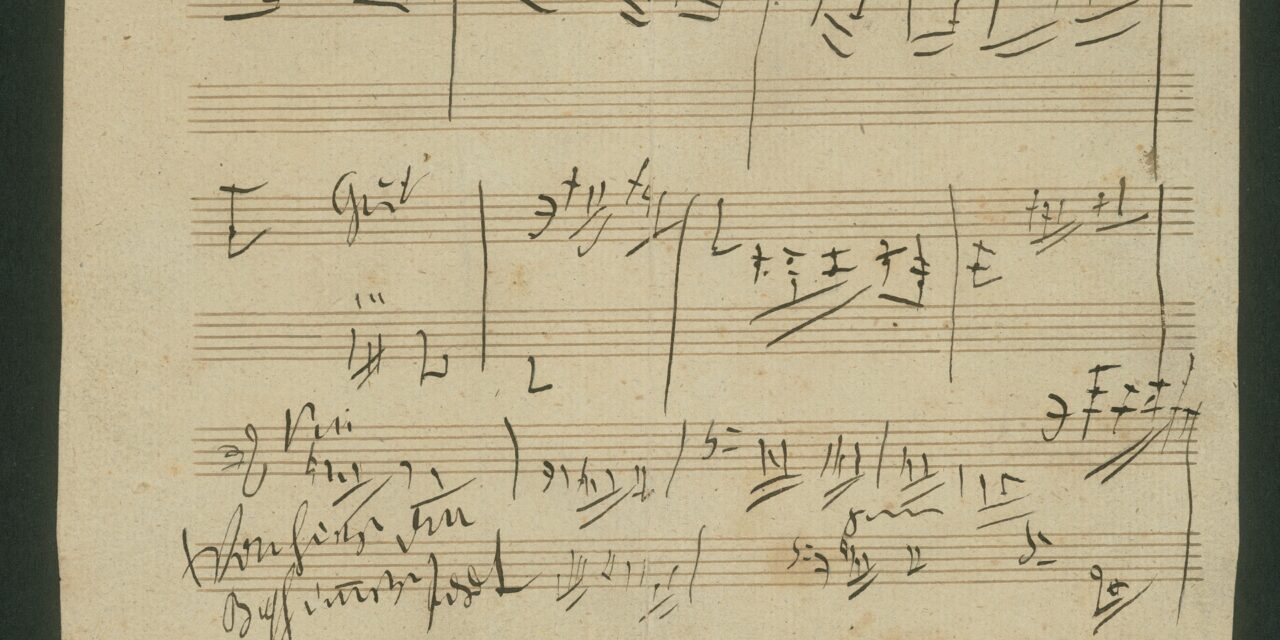The Garneau String Quartet joins The New Orford String Quartet

Review by Mark Morris
Edmonton Recital Society
Cecilia Livingston (b.1984): After the Wind
Ludwig van Beethoven (1770-1827): String Quartet No. 14 in C♯ minor, Op. 131
Felix Mendelssohn (1809-1847): String Octet in E-flat major, Op. 20*
New Orford String Quartet
* with the Garneau String Quartet
Muttart Hall
April 6, 2025
The New Orford String Quartet, formed in 2009 by principal players in the Montréal and Toronto Symphony Orchestras, have been regular and welcome visitors to Edmonton over the years – violinist Andrew Wan was a student at the University of Alberta, playing with the University orchestra.
Back in 2013, they included a very fine performance of Haydn’s Quartet in G Major, Op. 76. No.1. In 2017, they had just won a Juno, and gave what I termed “quite easily the best chamber music concert so far this season, and one of the most enjoyable I have heard anywhere”, with the Debussy String Quartet as the centrepiece. They returned, after being delayed by the Covid lock-down, in 2022.
They regularly include works by Canadian composers – notably a memorable performance in 2013 of Canadian Jacques Hétu’s early String Quartet No. 1, commissioned by the original Orford String Quartet. I wrote then that I hoped they would record it, and they did, along with the String Quartet No.2, released on a Naxos CD (Naxos 8.573395) in 2014.
And it was with a new Canadian work that they opened their concert last Sunday afternoon (April 6) in the Muttart Hall, under the auspices of the Edmonton Recital Society. Alas, this was the last concert of the Society in that excellent venue, that has seen so much wonderful chamber music over the years, but which has been bought by the Edmonton Public School Board to be part of their Centre High Campus. The EPSB are apparently closing it to public use – a missed opportunity, surely, for school board-community relations, but not one that will surprise many.
The work was After the Wind by the Toronto composer Cecilia Livingston. She is not, I suspect, a well-known name in the Prairies: by her own admission, she specializes in composing for voice, and especially in opera. She was composer-in-residence at Glyndebourne (2019-22), and is now composer-in-residence at the Canadian Opera Company (2022-). She is exactly the kind of composer we used to be able to hear in CBC’s radio program Two New Hours before that was axed, and exactly the kind of composer whose operatic work we might have been able to hear on Saturday Afternoon at the Opera until CBC stopped broadcasting any Canadian opera, and instead gave us only US performances. Indeed, this was the first chance I have had to hear any of her works live.

Cecilia Livingston has written “This picture of treefall, used to map tornado strength, movement, and impact, was a starting point for my piece which asks ‘What do these forests sound like, after the wind?'”
The picture was taken by a Northern Tornadoes Project drone after a tornado event in Meadow Lake Provincial Park, Saskatchewan, on June 29, 2019
After the Wind, which (as far as I have been able to track down) was premiered as one of three new five-minute compositions by Canadian composers (the others were Carmen Braden and Vincent Ho) in a New Orford concert in Cobourg, Ontario on March 9, 2025. It was commissioned by Sharon Wei, the New Orford’s violist, as part of the Western University’s Northern Tornadoes project, which aims to better detect and understand tornado occurrence throughout Canada. Exactly how that commission came about, and why the Northern Tornadoes Project should be commissioning music, I have not been able to find out, other than the New Orford are Artists-in-Residence at Western University, but it sounds an intriguing and fruitful cross-discipline idea. There are times when proper program notes really are necessary, especially with new works, and this was one of them – there was nothing at all about the music in the Edmonton Recital Society’s single sheet hand-out.
The work come across as a graphic evocation, a musical imagining, of sounds after a tornado has passed over, and the winds are still roaring around but dying away, and there are moments of contrast in dead spots. The writing is accomplished, the harmonies essentially tonal, and the main structural component was the juxtaposition wind effects and silence or stillness, with rising or falling swirling string lines punctuated by pizzicato effects, the occasional solo line, or held notes. The affect is quite dark to start off with (as one would expect as a tornado has just past over!), until a brief dancing idea appears. Then the wind tries to reassert itself, rather frenetically against cello interjects, but fails, as it passes away and the work ends quietly. An enjoyable and vivid little tone poem for string quartet, played with verve, and it made me wish we had the opportunity to hear a least one of her operas.
The New Orford closed the first half with Beethoven’s op.131 string quartet. It is one of Beethoven’s most complex string quartets, the last in a series that increased in the number of movements – here there are seven, of wildly different lengths (the third lasts under a minute), played continuously. It was written in 1826, when he was already deaf, and it wasn’t performed until after his death.
It teems with ideas, has cyclical elements, and was Beethoven’s favourite string quartet. One can see why: it seems to distill so much of his musical emotions, and perhaps his spiritual feelings (he quotes from his Missa Solemnis) while forging ahead with new elements to expand and contain the form. It is not an easy work to interpret – musicologists and musicians have been arguing about what it means ever since it was first performed – but it can be a transcendental work to hear, the musical thoughts of a person paradoxically freed by having to hear all the music internally, and then contemplating what music means in his life and in his approaching death.
I am afraid this performance was not one of those transcendental experiences for me, though I expect many in the audience would disagree. For the most part, the New Orford showed all their consummate technical prowess (though not always – there were moments where differences in timbre suggested differences in interpretation). But I found it all a little too clinical, with little sense of a human story in the music, and at one point Elgar’s quote from Shelley came into my head: “Rarely, rarely, comest thou, Spirit of Delight!”.
I remembered after the concert that I had heard the New Orford play Beethoven before, and I looked up my review, from 2013.
“The performance of Beethoven’s String Quartet No. 8…was a little too laid back for my taste. The danger of such secure technical skills is that they can sound a little too like clockwork… The whole quartet was beautifully played, and many may prefer such a smooth approach. But dig down into any Beethoven, and you will find a bubbling cauldron of emotions, however refined and contained by the music.”
I could have written exactly that about this performance.
However, in the second half of the concert there was an explosion of letting go that only served to highlight the dourness of the Beethoven performance. The New Orford were joined by Edmonton’s Garneau String Quartet for Mendelssohn’s String Octet in E-flat major, Op. 20. Admittedly this is very much a young man’s work (he wrote it when he was 16) – albeit a staggeringly precocious young man – and pours over with joy. But it was as if the whole hall had been lit up, such was the energy and enthusiasm and passion – and physicality – of this really gripping performance. Indeed, so passionate was the ending of the first movement that one suspected the performers had difficulty coming down for the opening of the second, which could have perhaps been a touch sweeter.
What was so effective is that this performance sounded like a small concerted orchestra in complete rapport, rather than a combination of two string quartets – more so than in the last, more mellow, performance in Edmonton, by the Vaughan and Vertex String Quartets in 2023 – fulfilling Mendelssohn’s requirement that it should be played in “symphonic orchestral style.” The gallop of the scherzo third movement was especially gripping, indeed releasing that spirit of delight, and bringing out the hints of Weber at the end.
What wonderful music making, by both quartets, and what a way to end a concert!


